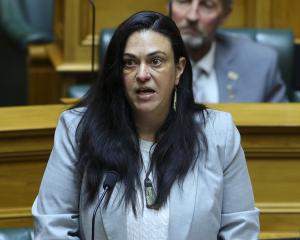
The sparsely populated and vast South is the region most dependent on helicopters.
A top-rate service is vital for accidents, medical matters and search and rescue.
The Government generally, likes dealing with a minimum of agencies.
Its bureaucrats like large operators and consistent standards.
But, rescue helicopter services grew hotchpotch around the country.
Each had different strengths and different ways of working, although the basic services were the same.
Against this background, the Government felt it should rationalise and services were put up for tender.
The possibility of an Australian operator flying in seemed a distinct possibility.After all, there was a parallel history in home care for the elderly.
In late 2012 it was decided all such care in Otago and Southland would be delivered by three large providers, one of which is effectively Australian and two of which are national providers in Wellington.
All the home-grown, Otago-based community providers — including the largest in Presbyterian Support Otago — were swept away.
The change was not even based on money but was seen as the way of the future.
So the threat to Mosgiel-based Helicopters Otago and Southern Lakes Helicopters based in Te Anau was stark and real.
Fortunately, good sense prevailed. Helicopters Otago co-operated with GCH Aviation in Christchurch and an agreement for the whole of the South Island was finally sorted.
Helicopters Otago had displayed the independence and initiative that a larger outfit might not have.
It pioneered the use of night-vision goggles for rescues and night flying and advanced its navigation capabilities so its craft could take off and fly in relatively bad weather.
The advantage of both those innovations in emergencies is obvious.
The new contract makes provision for a 24/7 service from Dunedin and Christchurch and dedicated day-time crews in Nelson, Greymouth and Queenstown.
For Queenstown, that is recognition of rapid growth in tourism over a large geographic area, as well as increases in the number of retirees and the increasing likelihood of medical crises.
Te Anau’s on-call inclusion, which only came after a public campaign, recognises the experience and skills of Sir Richard Hayes and his staff and the difficult conditions presented by the mountains and often wretched weather of Fiordland.
The area potentially to be covered is vast, including also Stewart Island, the Southern Ocean, the Subantarctic Islands and offshore.
The finalising of the contract has given Helicopters Otago the confidence to buy two new purpose-built machines.
All these developments should improve what is already a good service.
Southern people should be particularly aware of the need for swift medical transport after the campaign to save neurosurgery in Dunedin.
Much is made of the "golden hour", the need for speed in many medical emergencies.
Most funding comes from ACC and health sources because of accidents and medical needs.
There is also support via police for the often high-profile but less frequent mountain rescues and searches.
But, the improved services are also accompanied by demands for more community funding.
Each area has trusts which will need to raise more. Most already have generous sponsors, and rural communities, which see the value more than most, also raise large amounts of money.
We in the South can be pleased and proud of our rescue emergency services.
We never know when we all, personally, might need them.











